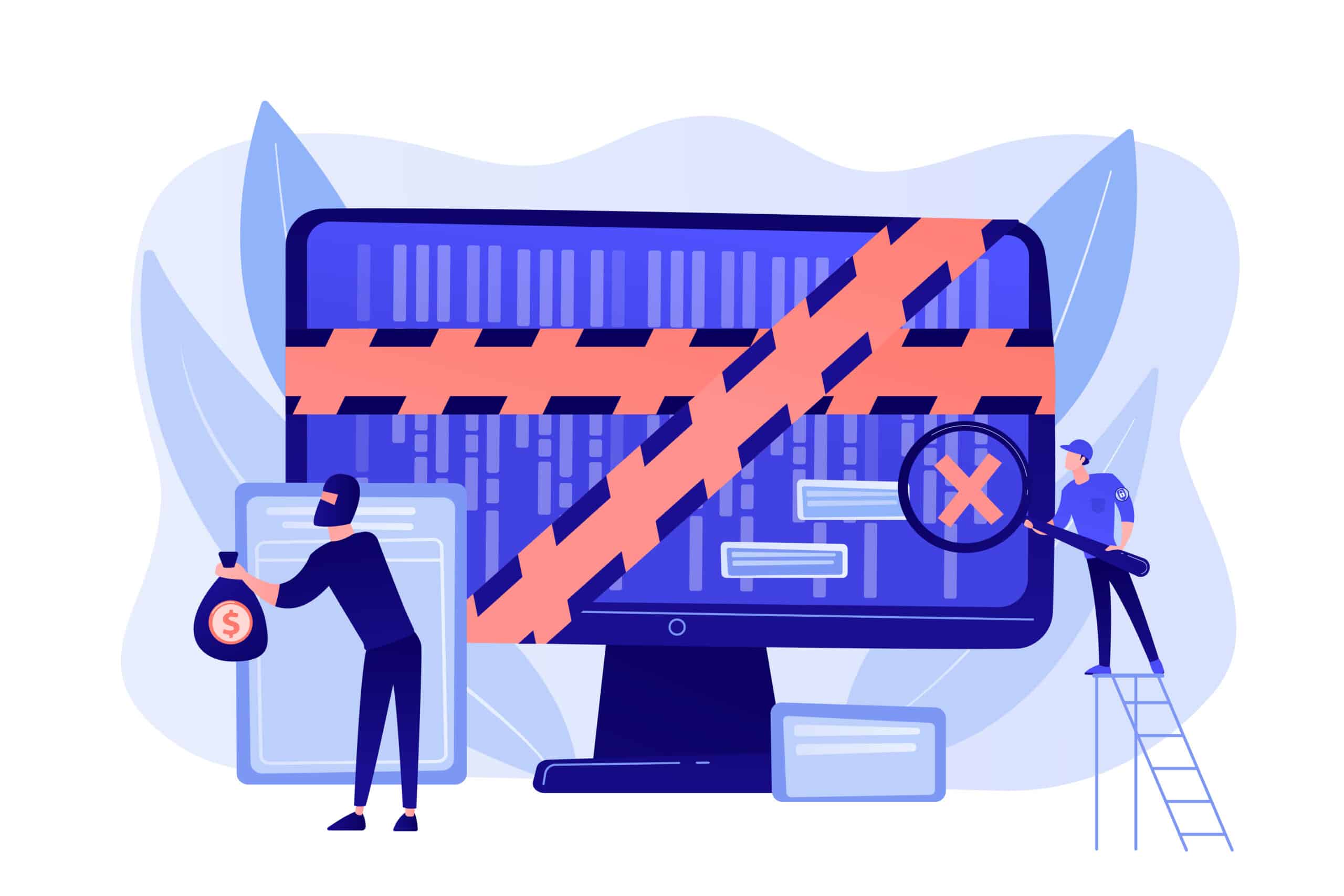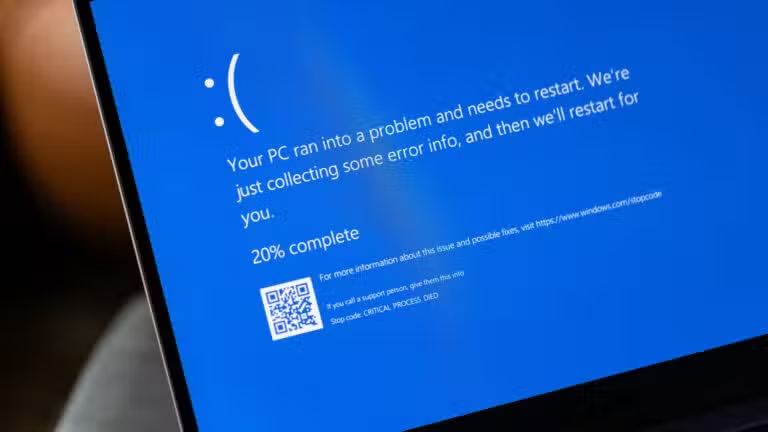Imagine a well-functioning machine suddenly stopping due to a small issue. This is similar to what occurred on July 19, 2024, when a problematic software update led to a major cybersecurity incident involving CrowdStrike Holdings. This event highlights the complexities of legal responsibilities in cybersecurity, showing how even a small mistake can have big consequences.
In this article, we’ll look into the legal aspects of the CrowdStrike & Microsoft outage incident. We’ll explore how the faulty update affected users, the roles of cybersecurity experts, and the importance of limitation of liability clauses in these situations.
“If you’re a lawyer for CrowdStrike, you’re probably not going to enjoy the rest of your summer,” said Dan Ives, a tech analyst for Wedbush Securities.
Understanding the CrowdStrike Incident
On Wednesday evening, July 19th, a faulty software update caused widespread issues for CrowdStrike’s clients. The U.S. cybersecurity giant released an update to Windows systems that triggered a logic error. Systems running CrowdStrike’s Falcon sensor for Windows 7.11 and above often crashed and displayed a blue screen of death (BSOD).
CrowdStrike has since attributed the problem to a bug in its test software and has promised to take steps to prevent a recurrence of this incident. It is estimated that this issue has cost Fortune 500 companies like Delta over $5 billion. Approximately 8.5 million Microsoft devices were affected, forcing them into a boot loop.
Key Highlights:
- Faulty Update: A problem with a recent software update caused significant issues for users. The update, meant to improve system performance and security, instead introduced a serious bug that disrupted the affected systems.
- Windows System Impact: The update mainly affected Microsoft Windows systems, creating a widespread problem due to the operating system’s wide use. Windows computers, crucial for many businesses’ daily operations, were suddenly rendered unusable.
- Detection Issues: The malfunction disrupted important CrowdStrike services like Falcon Complete and Falcon Sensor, affecting their ability to detect and respond to threats. This made systems more vulnerable to malicious activity.
In response, there was a swift review of the incident, with cybersecurity experts, including CrowdStrike CEO George Kurtz, working to resolve the issues and prevent further damage.
In a CNBC interview on Friday morning, CrowdStrike CEO George Kurtz mentioned that the company has been focused on addressing the ongoing problems and observed that, so far, most customers have been understanding.
Immediate Implications for CrowdStrike and Its Customers
The immediate impact of the July 19 incident included:
- Business Continuity: Many businesses saw interruptions in their daily operations, which affected productivity and revenue. System crashes prevented employees from accessing essential systems and data, causing delays in workflows and project timelines.
- Emergency Response: IT departments in the affected organizations had to act quickly to address the problems. This often involved rolling back updates, restoring systems from backups, and making sure critical data was not lost.
- Extended Downtime: In some cases, downtime lasted for hours or even days, depending on the complexity of the IT setup and the severity of the issues caused by the update.
CrowdStrike’s Falcon platform, which includes Falcon Sensor for threat detection and Falcon Complete for comprehensive protection, faced criticism as it became clear that the faulty update had caused significant problems.
Related Article: How to Manage Contracts Efficiently: Best Practices
Legal Implications for CrowdStrike

The issue of a faulty update raises important questions about CrowdStrike’s legal responsibilities. Key factors to consider include:
- Contractual Obligations: CrowdStrike’s contracts with clients likely have terms about liability for software issues. These terms may specify the company’s responsibility for updates and how much they are liable for any damage caused by faulty updates. Checking these terms will help understand the company’s legal duties and possible liabilities.
- Negligence Claims: Clients might accuse CrowdStrike of negligence if they can show that the company failed to meet industry standards or contractual commitments when providing the update. For example, if the update was rushed or inadequately tested, clients might argue this contributed to the problem.
- Financial Damages: CrowdStrike could be responsible for compensating clients for financial losses caused by the faulty update. This may include direct costs like system downtime and indirect costs such as lost business or damage to reputation.
CrowdStrike should also consider the possibility of regulatory scrutiny. Data protection agencies may review whether the company followed required security standards and met legal and industry benchmarks.
Potential Legal Actions
Given the scale of the incident and its impact, CrowdStrike could face several types of legal actions:
- Class Action Lawsuits: If many clients are affected, they might join together to file a class action lawsuit against CrowdStrike. This could increase the company’s legal risks and lead to significant financial and reputational damage.
- Regulatory Investigations: Regulatory agencies might look into the incident to check if CrowdStrike followed required cybersecurity and software update standards. Such investigations could result in fines, sanctions, or other regulatory penalties.
- Contractual Disputes: Clients may also pursue legal action based on their agreements with CrowdStrike. These disputes might involve breach of contract claims, seeking compensation for losses caused by the faulty update.
In summary, the legal implications of the July 19 incident are varied, including concerns about data breach liability, client impact, and regulatory compliance. A thorough review of the incident, understanding liability obligations, and proactive management of client issues are crucial for effectively addressing these challenges.
Related Article: Breach of Contract: Master How to Resolve Legal Disputes
Legal Implications for CrowdStrike Customers

The faulty update from CrowdStrike raises several significant legal concerns for its clients, including:
- Operational Disruptions: Clients who faced downtime or other problems due to the faulty update might seek compensation for their losses. This includes both direct financial losses and less tangible damages like business interruptions and loss of client trust.
- Data Breach Claims: If the update compromised data security, clients could file claims related to data breaches. These claims might argue that the update allowed unauthorized access to sensitive information, leading to further legal issues for CrowdStrike.
- Regulatory Compliance: Clients might also face regulatory challenges due to the breach. Depending on their industry and location, they may need to notify regulatory bodies, conduct audits, and take corrective actions to comply with data protection laws.
CrowdStrike must address these client concerns quickly and effectively. This means managing communication, supporting affected clients, and providing solutions to resolve the issues. How well the company handles these claims and minimizes damages will affect its legal standing and market reputation.
Related Article: What is Contractual Risk? Your Ultimate Guide
The Limitation of Liability Clause in Contracts

The limitation of liability clause is a fundamental component of CrowdStrike’s contracts, playing a critical role in managing risk and defining financial responsibilities. This clause essentially sets boundaries on the amount of financial liability that CrowdStrike might face due to various issues, including those arising from a cybersecurity incident like the one that occurred on July 19, 2024. Here’s a closer look at its key elements:
Cap on Liability
The “Cap on Liability” is a key feature of the limitation of liability clause. It defines the maximum amount that CrowdStrike can be held financially responsible for in the event of a claim. This cap serves as a safeguard for both the company and its customers, ensuring that there is a clear financial limit to potential damages. In the context of the recent incident, this cap would determine the upper limit of CrowdStrike’s financial responsibility for any damages resulting from the faulty update.
- Purpose: Protects both parties by setting a clear limit on financial exposure.
- Application: Applied to various types of claims, including those related to the faulty software update.
- Implications: Provides a predictable framework for managing financial risk.
Exclusions
The clause also specifies what types of damages are excluded from liability. These typically include consequential damages, which are losses that occur as a secondary result of the primary issue. For example, if the faulty update led to business interruptions, loss of revenue, or reputational damage, these types of consequential damages might be excluded from the liability cap.
- Consequential Damages: Often excluded as they can be unpredictable and potentially massive.
- Scope of Exclusions: Clearly defines what is not covered under the liability cap.
- Legal Implications: Helps in setting clear expectations and reducing disputes over what is covered.
Conditions
The limitation of liability clause outlines specific conditions under which the liability cap applies. These conditions might include:
- Breach of Contract: Specifies that the cap applies only if there is a breach of the contract terms.
- Exclusions from Liability:
- Details any scenarios where the clause might not apply, such as instances of gross negligence or willful misconduct.
- Notification Requirements: Includes requirements for timely notification of claims to ensure the clause is applicable.
These conditions are crucial for ensuring that both parties understand the circumstances under which the limitation of liability is enforceable.
Related Article:3 Effective Contract Management Strategies: Dos and Don’ts
Common Clauses in CrowdStrike Contracts

CrowdStrike’s contracts typically include several key clauses beyond the limitation of liability. Each plays a distinct role in managing risk and setting clear expectations for both parties:
Limitation of Liability
As discussed, this clause defines the extent of financial responsibility and provides a cap on the maximum amount payable for damages. It is a critical component for risk management, especially in light of incidents like the one involving the faulty update.
- Definition: Clearly defines the maximum amount of liability.
- Impact: Provides financial predictability and limits exposure.
Indemnification
The indemnification clause specifies the responsibilities for covering claims or losses that arise from certain events. In the case of cybersecurity incidents, this might include indemnification for claims made by third parties as a result of the incident.
- Scope: Outlines who is responsible for covering various types of claims or losses.
- Coverage: This may include third-party claims related to the incident.
- Implications: Ensures that both parties understand their financial responsibilities in the event of a claim.
Force Majeure
The force majeure clause addresses unforeseen events that could impact performance and liability. This might include natural disasters, war, or other events beyond the control of the parties involved. In the context of the July 19 incident, this clause could be relevant if the faulty update was caused by an external factor.
- Definition: Covers unforeseen events that impact contractual performance.
- Application: Determines how such events affect liability and obligations.
- Legal Framework: Provides a clear framework for managing extraordinary events.
These clauses are essential for creating a comprehensive contract that addresses potential risks and establishes clear expectations. They ensure that both CrowdStrike and its customers have a mutual understanding of their responsibilities and the limits of liability in various scenarios.
Related Article:10 Tips for Contract Negotiation : Strategies Toward Success
Mitigating Legal Risks to Avoid Incidents Like This

When it comes to mitigating legal risks in the cybersecurity realm, learning from the recent issues faced by CrowdStrike is crucial. Whether you’re a cybersecurity provider or a customer, understanding and implementing best practices can help you avoid similar pitfalls. Here’s what you should focus on to steer clear of legal complications and ensure effective risk management.
1. Establish Clear Contracts
What to Look For:
- Detailed Terms: Ensure that contracts specify exactly what services are being provided. For instance, if you’re using a platform like CrowdStrike’s Falcon, the contract should clearly outline what Falcon Sensor and Falcon Complete include, as well as any limitations. Ambiguities in service scope can lead to misunderstandings and disputes.
- Limitation Clauses: Check that the contract includes a limitation of liability clause. This should define the extent of financial responsibility in case of a breach or service disruption. For example, the contract should outline what types of damages are covered and what are excluded, such as consequential damages from a faulty software update.
- Dispute Resolution: Look for provisions that outline how disputes will be resolved. Ensure there’s a clear process for handling conflicts, such as mediation or arbitration, and that the jurisdiction for legal actions is specified. This clarity helps in resolving issues efficiently and minimizing legal costs.
2. Conduct Regular Audits
What to Look For:
- Risk Identification: Implement regular audits to identify potential vulnerabilities and compliance issues. For example, assess how well your cybersecurity platform, like Falcon Complete, performs in detecting and responding to threats. Regular reviews can help catch issues before they escalate.
- Adherence to Regulations: Ensure that audits verify compliance with all relevant regulations and internal policies. This includes checking that your security practices align with legal requirements and that any updates or changes in regulations are incorporated into your practices.
- Practice Updates: Look for audit results that prompt updates to your security measures and practices. Regular audits should lead to adjustments in your cybersecurity strategy to keep pace with evolving threats and regulatory changes.
3. Provide Continuous Training
What to Look For:
- Employee Education: Make sure there are ongoing training programs for employees on cybersecurity best practices. Training should cover how to recognize phishing attempts, manage sensitive data, and use security tools like Falcon Sensor effectively. Well-informed employees are less likely to fall victim to attacks.
- Current Knowledge: Ensure that training programs are updated regularly to reflect the latest developments in cybersecurity. This includes new malware types, emerging threats, and changes in regulations. Keeping employees informed helps in maintaining robust security measures.
Related Article: How to Manage Contracts Efficiently: Best Practices
4. Importance of Clear Contracts
What to Look For:
- Clear Definitions: Contracts should provide detailed definitions of the services and limitations. For instance, if you’re engaging a cybersecurity firm, ensure the contract clearly defines the scope of the services provided and any limitations, such as what is covered in case of a software glitch or system outage.
- Defined Liabilities: Look for well-defined limitation clauses that set clear boundaries on financial liability. This helps in managing expectations and protecting against excessive financial risks in the event of a security incident or service failure.
- Dispute Resolution Mechanisms: Ensure that the contract includes clear procedures for resolving disputes. This should outline the steps for mediation or arbitration and specify the jurisdiction for legal actions, helping to resolve conflicts efficiently.
5. Regular Legal Audits and Compliance Checks
What to Look For:
- Risk Detection: Implement regular legal audits to identify and address potential risks. This includes evaluating the performance of your cybersecurity tools and ensuring compliance with data protection laws and internal policies.
- Regulatory Compliance: Ensure that compliance checks confirm adherence to all relevant regulations. This helps avoid regulatory penalties, increasing visibility and maintains customer trust.
- Practice Updates: Regular audits should lead to updates in security practices to align with new laws and emerging threats. Staying current ensures ongoing protection and compliance.
By focusing on these key areas, you can avoid the legal risks and operational challenges similar to those faced by CrowdStrike. Clear contracts, regular audits, and continuous training are essential for managing risks and ensuring effective cybersecurity practices.
Related Article: Best Contract Management Software: Top 10 CLM in 2024
Conclusion
The incident on July 19, 2024, highlights the critical importance of robust cybersecurity practices and clear contractual agreements. The fallout from CrowdStrike’s faulty software update underscores the necessity for clear contracts, regular audits, and ongoing employee training. By setting precise terms in contracts, conducting frequent compliance checks, and continuously educating staff on best practices, organizations can better manage their legal risks and avoid the pitfalls experienced by CrowdStrike. Proactive measures and a solid understanding of liability clauses are essential to safeguarding against disruptions and maintaining cybersecurity resilience.





